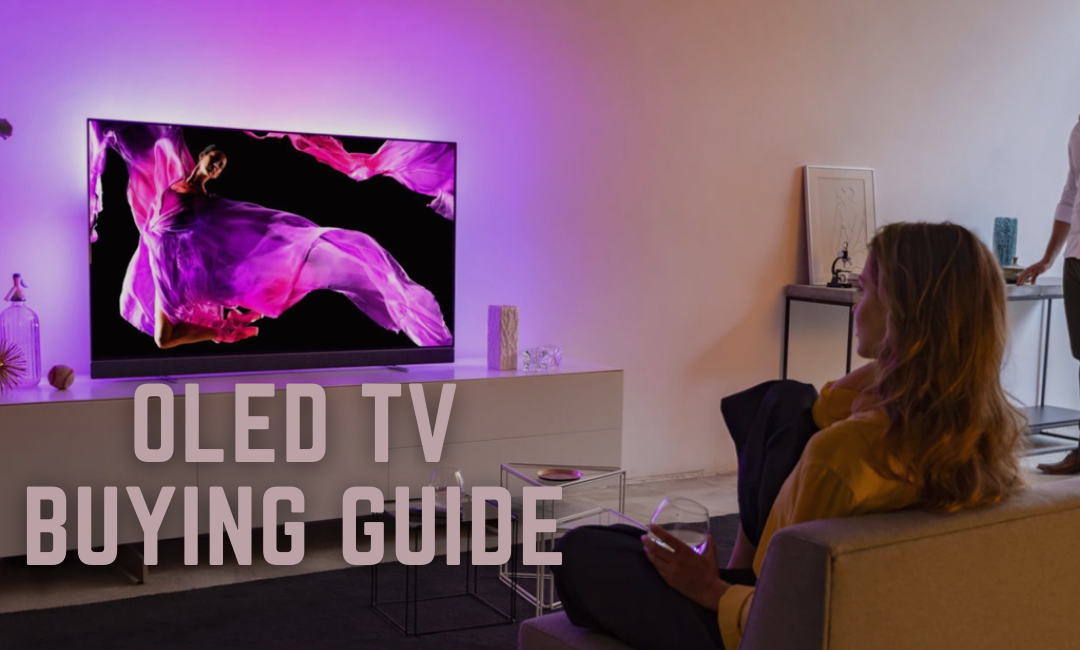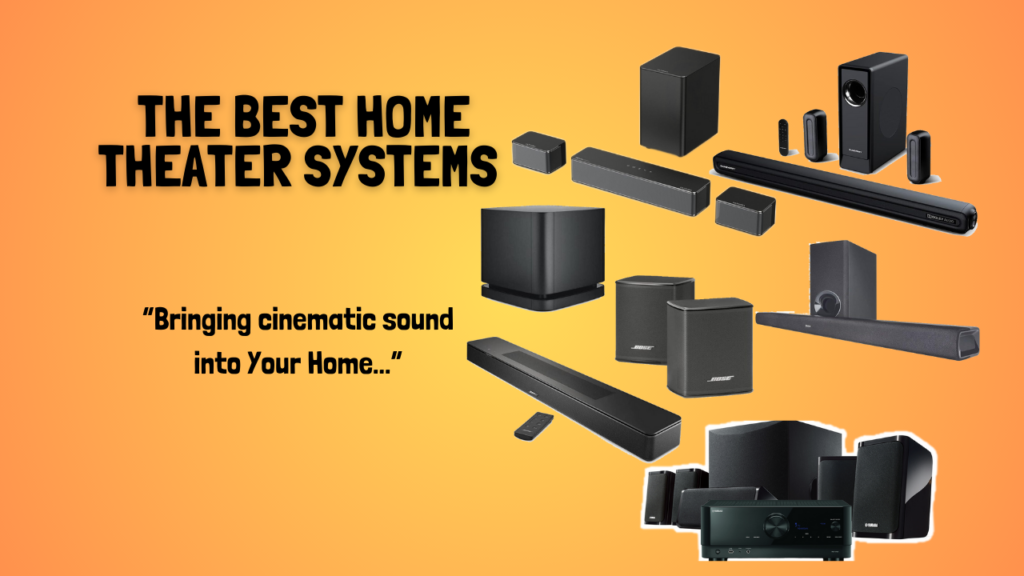Are you confident in selecting the TV panel technology that’s right for you when shopping for your next TV? Are you able to tell which is which? How about the specs and features? If you’re unsure, it’s only natural to feel overwhelmed or confused. Understandably so, not everyone is a tech expert. But not to worry! Our OLED TV buying guide is here to help you out to make sure you’re well-equipped with the right knowledge for your next shopping trip. From knowing the suitable specs for you to reasons why you should certainly go for an OLED panel. To learn more, just keep scrolling!
Check Out Our Top Picks For The Best OLED TVs For Gaming In 2021 Here.
Why Choose An OLED Panel?

If you’re still unsure which type of screen panel technology you should choose for your next TV, let me give you a few reasons why an OLED TV is your best choice.
When you’re shopping for a TV, you’ll see a handful of different panel technologies in the market. These particular panels are divided between your standard LEDs, the OLEDs, and the relatively new QLEDs from Samsung. If you’d like to know the differences between these panel technologies, we’ll be getting to that in a bit.
In case you’re unaware, OLED panels are a kind of panel technology that brings images to life on your television. However, unlike the LEDs, it is now the most advanced and widely-used technology available when it comes to TVs. Since recent years, more and more people are now switching and upgrading to OLED TVs due to the stunning visuals and vibrancy they bring.

While standard LED displays use a backlight to create a picture, OLED TV pixels use electricity to produce their own organic light. To put it simply, an OLED display allows you to control visuals at the pixel level because each pixel self-illuminates and can also be turned on and off separately. This method employs less electricity to provide increased brightness while also allowing for total black.
As a result, any film or content with both darkness and brightness, such as a star-studded night sky, will appear realistic. This means you’ll be getting the whitest whites and the darkest blacks, as well as everything in between with limitless contrast.
This particular aspect of OLED has made a huge impact in terms of the visuals they create in your televisions. OLED is truly pushing technological boundaries in terms of color accuracy and visual responsiveness, as well as physical characteristics and energy efficiency.
OLED Vs. QLED & LED
Now if you’re still contemplating choosing OLED for your next TV, here are some brief comparisons between these TV types.
LED & QLED

LED panels, which use light-emitting diodes to illuminate the LCD screen and can be incredibly small, account for the vast majority of televisions being sold today. A huge advantage they have is that they are the more budget-friendly option among these panel technologies, which is why a lot of consumers opt for this type of TV.
Active dimming, also known as local dimming, allows many of these TVs to dynamically light up select sections of the screen while dimming others to better portray a scene’s mix of light and dark areas. Additionally, backlighting is a concealed feature that distinguishes inexpensive LED TVs from the more premium and high-end models.
However, despite full-array backlighting, you can’t expect LED screens to reach the deepest black levels the way OLEDs can. That said, the colors don’t appear punchier or more vibrant in comparison. Some shadow detail also gets lost because the pixels aren’t individually lit.
Another LCD technology, quantum dots (also known as QLED), is gaining popularity, owing to HDR’s necessity for a wider range of colors and increased brightness. An LCD with quantum dots features an additional layer, or “rail,” of nanocrystal dots of various sizes that light up when the LED backlight strikes them. As a result, the color range is expanded and the brightness is boosted.
If you’re on a budget and unwilling to spend thousands of dollars on an OLED panel, a QLED might be a good balance between your regular LCDs and pricy OLED TVs. However, despite the fancier terms and similarities with OLEDs, always keep in mind the QLEDs are still essentially LED panels.
OLED

As stated before, OLED TVs outperform full-array LED TVs due to their dozens of illumination zones. To achieve pure black and astonishing levels of contrast, OLEDs use a layer of organic LEDs controlled at the pixel level instead of a backlight. As a result, Expect vibrant colors and, more importantly, lightning-quick response times.
OLED panel manufacturing is also less harmful to the environment than regular panel manufacture. LCD panels, on the other hand, require the greenhouse gas Nitrogen Trifluoride in their manufacturing, but OLEDs do not. So, if you want to conserve the environment while improving picture quality, an OLED television may be the way to go.
However, there are also a few disadvantages to OLED. One is that they can be quite expensive, and second, there’s always the risk of permanent burn-in.
If You Want To Check Out OLED TV Models, You Can Read Our Top Recommendations Here.
Things To Consider
4K or 8K Resolution?

4K TVs are becoming more widely available these days. As a result, Ultra HD 4K televisions are becoming more affordable. Not to mention, in terms of visual quality and fidelity, the greatest 4K TVs on the market today can also easily compete with the top gaming monitors on the market.
Small items on the screen have more detail, including crisper typography, which is the main advantage of 4K TVs. Images appear richer and more lifelike than on the average HDTV, but the differences are minor. Larger TVs are more comfortable to view in a regular-sized home since the crisper picture allows you to easily observe the screen from a shorter distance.
Moreover, Netflix, Amazon Video, and even YouTube have begun to provide 4K material, making smart TVs with online streaming apps your best choice for accessing 4K movies and shows.
On the other hand, if you thought 4K resolution was impressive, wait till you see 8K, which boosts the detail even further with 7680 x 4320 pixels. It’s incredible to see, and it’s the next big thing in televisions for consumers. However, any good TV buying guide should advise you that it’s not worth your money just yet. They cost a fortune and it’s better to wait a few years or more until the prices go down.
On top of that, 8K is also still missing one crucial component: content. There are no 8K movies available for purchase yet in the market, and streaming 4K content is already stressing many people’s internet connections.
Check Out Our Review Of The Sony Bravia A9S Here If You’re Looking For An Amazing 4K OLED TV.
HDR Capabilities

HDR stands for high dynamic range and is a new feature of 4K televisions. It refers to the capacity to produce more colors, contrast levels, and brightness. HDR is essentially a 4K, or Ultra HD, format update.
The UHD Alliance, an industry trade association, has established HDR10 as the basic standard for high-dynamic-range videos. Because dozens of firms implement this fundamental HDR compatibility criteria, you’ll see “HDR10” or “Ultra HD Premium” on an increasing number of TVs this year.
Dolby Vision is another form of HDR developed by the same people that brought us Dolby noise reduction and surround sound. To display HDR material, a Dolby Vision set must meet a tighter set of criteria. As a result, Dolby Vision has led the market in proprietary HDR formats so far.
There is still considerable HDR skepticism. HDR10 is presently compatible with any HDR-enabled TV on the market, however, Dolby Vision is only available on sets that match Dolby’s technical requirements and pay license costs. Despite this, Dolby Vision has fast become the HDR industry standard.
If You’re Looking For An OLED TV That Supports Dolby Vision, Read Our Review Of The LG CX OLED Here.
Gaming-Friendly Features

Due to numerous lockdowns and quarantines, plenty of households and consumers turned to games to get through the ongoing pandemic. From the past months, demand and prices for gaming consoles and PC parts have skyrocketed due to the scarcity of supply. However, that still doesn’t stop people from investing in the newest next-gen consoles or getting their hands on the latest AAA titles.
So if you’re planning to use your TV as your gaming monitor, finding a model that has great gaming-friendly features should be one of your top priorities. From low input lags, VRRs, and quick response times, these are just some of the gaming features in a TV to look out for. Thankfully, a lot of manufacturers and brands nowadays are making sure that their TVs can offer these qualities to meet your needs.
If you’re unsure or confused with these terms, I’ll be explaining them below to help you out.
Our Final Verdict
All in all, OLED TVs are just simply superior when it comes to TVs. Aside from the obvious reasons for better visual quality, choosing OLED also means a better gaming experience as well as saving the planet from the dangerous production of certain chemicals. They’re definitely worth investing in and the best models in the market can surely last you for a handful of years (or even more) before you realize it’s time for an upgrade.
Have you already bought your own OLED TV? Did our OLED TV Buying Guide help you in choosing the right model for you? Let me know in the comments section below if you have any suggestions, insights, or questions to ask. I would love to hear all your thoughts!
Recommended reading for you:
- Best OLED TV For Gaming: The Most Vibrant Screens For Your Gaming Sessions
- LG CX OLED TV Review: Excellent But Expensive
- The Best 4K TV For Gaming 2021: Time To Level Up Your Screens
- LG OLED C1 Review: The Best 4K TV For Gaming?
- Samsung QN90A Review: Better Than OLED TVs?
- Best Android Tablets For Gaming In 2021: Our Top Picks
- Apple iPad 8th Gen Review: A Great Value, Kid-Friendly Tablet
- Android Tablets Buying Guide 2021: What You Need To Consider
- Samsung Galaxy Tab S7 Plus Review: The Best Android Tablet?
- The Best Headphones For Gaming In 2021
- Best 4k Gaming Monitors 2021: The Sharpest & Brightest Displays
- The Asus ROG Strix XG27UQ Review: Immerse Yourself In The Latest AAA Games With The Best 4k Gaming Monitor
- The LG 27GN950-B Review: Watch Your Games Come Alive On 4k
- Best Gaming Desks 2021: Reign Supreme In Comfort & Style
- Best Computer Gaming Chairs For Adults 2021: For Next Level Gaming!
- Sony Bravia A9S Review: What You Need To Know
- 4K TV Buying Guide For Gaming: Bigger Displays & Better Response Time
- The Best Tablets For Kids In 2021: Parent-Approved & Kid-Friendly!
- How To Choose The Best Tablet For Your Kids 2021
- The Amazon Fire HD 10 Kids Pro Review: A 2021 Review On The Best Tablet For Your Child
- Microsoft Surface Pro 7 Review: The Complete Package?
- SteelSeries Arctis Pro Review: The Best Gaming Headset For Audiophiles
- Razer BlackShark V2 Pro Review: The Best Wireless Gaming Headset?
- Best Computer Gaming Chairs For Adults 2021: For Next Level Gaming!
- The Ultimate Computer Gaming Chair Guide For Every Gamer This 2021.
- Cougar Argo Gaming Chair Review: Is It The Next Best Thing?
- The Cougar Mars 120 Gaming Desk Review: Your Superior Gaming Desk With LED Lights
- The Arozzi Arena Gaming Desk Review: Go Big Or Go Home With Your Gaming Setup
















